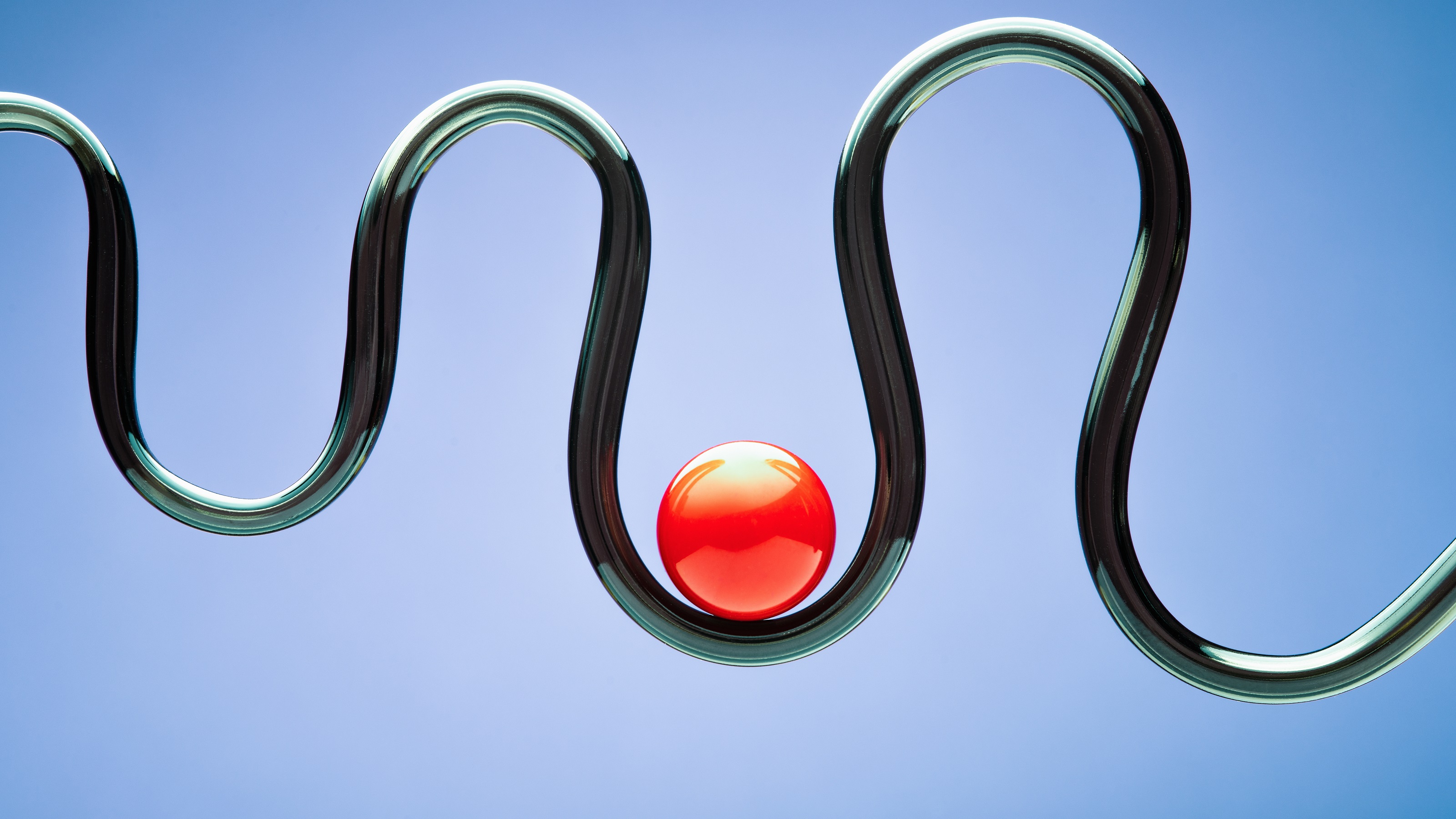Ready for a Career Change? Consider Nonprofit Work
Whether in paid roles or through volunteer efforts, many executives add meaning to their second-act career change by using their skills to help a meaningful cause.


Whether you’re bowing out, taking a step back or seeking an entirely new line of work, a second-act career change to nonprofit work is a move that’s becoming increasingly popular with executives from many different sectors. The way they see it, this kind of work allows them to transfer the talents, skills and expertise built during a corporate career to meaningful work in the nonprofit sector.
Facing a major life change often helps executives realize that they’re not ready to be done adding value. Especially for those considering retirement, a solid, satisfying life plan is as important as a long-term financial one, since research shows that negative health outcomes can often accompany a “purposeless” retirement.
Get Started With Discernment
To get started, you’ll find there’s significant value in spending time on reflection and discovery. Think about what your strengths are, what activities you find meaningful and what you want to spend time on. If you’d like to do this reflection in a more structured setting, consider working with a career-transition counselor.

Sign up for Kiplinger’s Free E-Newsletters
Profit and prosper with the best of expert advice on investing, taxes, retirement, personal finance and more - straight to your e-mail.
Profit and prosper with the best of expert advice - straight to your e-mail.
Anything can happen during this discernment. You might rediscover a long-buried interest in young people, the arts or animal welfare. Perhaps current events have encouraged you to support issues like affordable health care, equitable education or fair housing. Or you might feel a passion for climate change. One retiring executive recently told me, “When I retire from this job, I want to work on saving the planet for my grandkids.”
Which Role Makes Sense for You?
Once you’re clear about your passions and interests, there are many ways you can make a meaningful contribution:
- Part-time volunteering. Many organizations need people to help with marketing, operations, communications, fundraising and development. They’re looking for volunteers with significant experience, fresh commitment and lots of energy. The great thing about volunteering is that you can set the pace and level of commitment to work best with your lifestyle.
- Board membership. If you’d like to get more involved, consider raising your hand to be a nonprofit board member. Before moving forward, ask plenty of questions about board members’ time commitments and fundraising requirements, which are common on most nonprofit boards.
- Leadership role. You might be interested in an executive director (ED) position, or perhaps a role as a member of the ED’s team. Just remember that the only “downshift” it will represent will likely be in your compensation package. Leadership is always hard work, and many nonprofits are working diligently despite limited budgets and resources. If you’re hoping for more free time and flexibility in your second act, a leadership role may not be for you.
How to Find the Right Organization
Next, start searching for a nonprofit that fits with what you learned during your discovery process. Let colleagues and friends know what you’re thinking and add a question about nonprofit participation at all your networking meetings. You might be surprised at the range of interests your colleagues represent, and they can serve as good “ins” for you with nonprofit leadership.
When you’re down to a couple of candidates, ask for informational interviews with board members and leaders of your top-ranked groups. Attend events hosted by your nonprofits of interest to see what resonates with you.
As you’re looking for a place to land, you’ll need to create a narrative that will make sense for a new role. Make a list of your transferrable skills and interests so that you can convince an organization of the ways your for-profit experience will transfer to their world. Create a clear narrative that outlines the kind of work and organizations you’re interested in and update your LinkedIn profile with that information.
Even Volunteering Is Still a Job
Whatever you do, don’t minimize the time and effort this pivot can represent. Some executives enter into a board membership or a leadership role with the attitude that it will be a major downshift, only to find that the work is just as challenging as their corporate careers ever were.
Of course, the intangible rewards can be significant, as you find ways to bring all your skills to bear on a purposeful, rewarding second act.
Want to learn more? Marcia Ballinger has written a terrific book, Make the Jump: Reinvent Your Career in the Nonprofit Sector, which covers each of these topics in much greater depth.
Get Kiplinger Today newsletter — free
Profit and prosper with the best of Kiplinger's advice on investing, taxes, retirement, personal finance and much more. Delivered daily. Enter your email in the box and click Sign Me Up.

Anne deBruin Sample, CEO and owner of Navigate Forward, is an experienced HR leader and Career Transition Expert. She has written for CEOWorld magazine and has been published in Fast Company and The Wall Street Journal. Her experience includes high-level positions at PepsiAmericas, Caribou Coffee and Whirlpool Corp.
-
 Is the Economy at Risk of a Recession Because of Tariffs? What the Experts Are Saying
Is the Economy at Risk of a Recession Because of Tariffs? What the Experts Are SayingWith the stock markets up and down and tariffs on and off everyone including retirees may wonder what it means for the economy. Here's what the experts think.
By Donna Fuscaldo Published
-
 Stock Market Today: Tariff Pause Triggers 3,000-Point Dow Rally
Stock Market Today: Tariff Pause Triggers 3,000-Point Dow RallyThe bond market is sending concerning signals as the Trump administration executes its rapid reordering of global trade relationships.
By David Dittman Published
-
 Stick to the Plan: Don't Panic During Economic Uncertainty
Stick to the Plan: Don't Panic During Economic UncertaintyTake a breath and step back. Focus on a solid fiscal foundation to stabilize your investments during stock market volatility.
By Eric Lahaie, CFS®, RICP® Published
-
 How Inflation Affects Your Finances and How to Stay Ahead
How Inflation Affects Your Finances and How to Stay AheadThe cost of goods and services is certain to rise over time, making it essential to have a financial plan that will help you keep pace.
By Kyle D. Sikes Published
-
 Now's a Great Time to Become a Financial Adviser: Here's Why
Now's a Great Time to Become a Financial Adviser: Here's WhyThere's a growing need for financial advisers. Why not take on a role that offers earning potential and work-life balance and helps change lives?
By John Roberts Published
-
 Little-Known Ways to Guard Your Retirement Income
Little-Known Ways to Guard Your Retirement IncomeIs your retirement income safe if stocks continue to plummet? Most retirees don't know these reliable options to limit their market exposure.
By Jacob Cornell Published
-
 Three Warning Signs Your Investments Are (Needlessly) Too Risky
Three Warning Signs Your Investments Are (Needlessly) Too RiskyAll investments come with risk, but the secret is to take only enough risk to get you to your specific savings goals — and no more than that.
By Eric Roberge, Certified Financial Planner (CFP) and Investment Adviser Published
-
 His Employees Don't Work 'For' Him, But 'With' Him
His Employees Don't Work 'For' Him, But 'With' HimWhile it might not seem that way, there are indeed employers out there who value the relationships they have with their employees. Here's an example.
By H. Dennis Beaver, Esq. Published
-
 Reduce Your Retirement Tax Risk With the Three-Bucket Strategy
Reduce Your Retirement Tax Risk With the Three-Bucket StrategySplitting retirement funds into three buckets with distinct tax treatments can help you avoid a nasty tax bill down the line. Here's how the strategy works.
By Bryan S. Slovon, Investment Adviser Published
-
 Financial Fact vs Fiction: This Roth Conversion Myth Could Cost You
Financial Fact vs Fiction: This Roth Conversion Myth Could Cost YouWhile some 'golden rules' stay in style forever, the financial landscape is constantly evolving. Here are five common myths to revisit (with more on the way).
By Scott McClatchey, CFP® Published